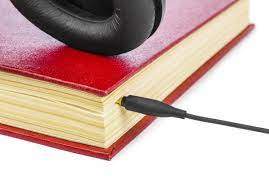
In a world dominated by visual media, the blind and visually impaired community often face barriers when accessing written content. However, with advancements in technology and the rise of audiobooks, barriers are being broken down, and access to literature is becoming more inclusive than ever before. In this article, we’ll explore the evolution of audiobooks for the blind community, from their humble beginnings to their pivotal role in promoting literacy and accessibility.
The Early Days:
The concept of audiobooks dates back to the 1930s when vinyl records were used to record spoken versions of books for the visually impaired. These early audiobooks were bulky and limited in selection, making access to literature a challenge for many. However, they marked the beginning of a movement towards greater accessibility for the blind community.
The Rise of Digital:
The advent of digital technology revolutionized the audiobook industry, making it easier to produce and distribute spoken-word content. With the rise of digital audio formats such as MP3 and streaming services like Audible, audiobooks became more accessible and convenient than ever before. Blind individuals could now download their favorite titles instantly and listen to them on portable devices such as smartphones and tablets.
Accessibility Features:
As audiobooks gained popularity, developers began incorporating accessibility features specifically designed for the blind and visually impaired. Voice-activated navigation, adjustable playback speeds, and compatibility with screen reading software are just a few examples of features that make audiobooks more accessible to individuals with visual disabilities.
The Impact:
The evolution of audiobooks has had a profound impact on the blind community, empowering individuals to access a vast array of literature independently. No longer confined to specialized libraries or limited book selections, blind individuals can now explore a world of literature at their fingertips. Audiobooks promote literacy, education, and cultural enrichment, enabling blind individuals to participate more fully in society.
Looking Ahead:
As technology continues to advance, the future of audiobooks for the blind community looks promising. Innovations such as voice-controlled virtual assistants, artificial intelligence, and immersive audio experiences hold the potential to further enhance accessibility and usability for blind individuals. With each new development, the barriers to accessing literature are being dismantled, paving the way for a more inclusive future.
Conclusion:
In conclusion, the evolution of audiobooks has transformed the landscape of accessibility for the blind and visually impaired community. What once started as a humble effort to provide spoken versions of books has blossomed into a thriving industry that promotes literacy, independence, and inclusion. Organizations like Living Paintings play a crucial role in this evolution, providing tactile and audio-enhanced books for sight impaired and blind individuals. As we look to the future, let us continue to embrace technology and innovation to ensure that everyone, regardless of their abilities, has equal access to the world of literature.





